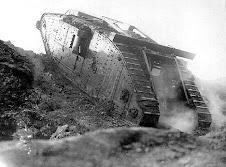The remains of three Paleolithic dogs, including one with a mammoth bone in its mouth, have been unearthed at Předmostí in the Czech Republic, according to a newJournal of Archaeological Science paper. The remains indicate what life was like for these prehistoric dogs in this region, and how humans viewed canines. The dogs appear to have often sunk their teeth into meaty mammoth bones. These weren’t just mammoth in terms of size, but came from actual mammoths.In the case of the dog found with the bone in its mouth, the researchers believe a human inserted it there after death.
"The thickness of the cortical bone shows that it is from a large mammal, like a rhinoceros, steppe bison or mammoth," lead author Mietje Germonpré told Discovery News. "At Předmostí, mammoth is the best represented animal, with remains from more than 1,000 individuals, so it is probable that the bone fragment is from a mammoth."
Germonpré, a paleontologist at the Royal Belgian Institute of Natural Sciences, and colleagues Martina Laznickova-Galetova and Mikhail Sablin, first studied the remains, focusing on the skulls, to see what animals they represented. In the fossil record, there is sometimes controversy over what is a wolf, dog or other canid. "These skulls show clear signs of domestication," Germonpré said, explaining they are significantly shorter than those of fossil or modern wolves, have shorter snouts, and noticeably wider braincases and palates than wolves possess. She described them as large, with an estimated body weight of just over 77 pounds. The shoulder height was at least 24 inches. "The shape of their skull resembles that of a Siberian husky, but they were larger and heavier than the modern Husky," she said.
 |
| Dog skull with mammoth bone in his mouth |
The dogs died when they were between 4 and 8 years old, suffering from numerous broken teeth during their lifetimes. Based on what is known of the human culture at the site, the researchers believe these dogs “were useful as beasts of burden for the hauling of meat, bones and tusks from mammoth kill sites and of firewood, and to help with the transport of equipment, limiting the carrying costs of the Předmostí people.” Since mammoth meat was likely the food staple, the scientists further believe that the surplus meat “would have been available to feed the dogs.” The dog skulls show evidence that humans perforated them in order to remove the brain. Given that better meat was available, the researchers think it’s unlikely the brains served as food. Instead, based on these archaeological finds and the ethnographic record, it’s possible that the body manipulation after death held ritual importance.
"Among many northern indigenous peoples, it was believed that the head contains the spirit or soul," Germonpré explained. “Some of these peoples made a hole in the braincase of the killed animal so that the spirit might be released.” The mammoth bone in the dog's mouth could signify "that the dog was 'fed' to accompany the soul of the dead person on its journey." Rob Losey, an associate professor of anthropology at the University of Alberta, told Discovery News that the new study is "very convincing," and shows "quite clearly that the dog domestication process was underway thousands of years earlier than previously thought." He added, "The distinctive treatment given some of the remains also is compelling, and this indicates to me that a special connection had developed between people and some canids quite early on -- long prior to any good evidence for dogs being buried."







